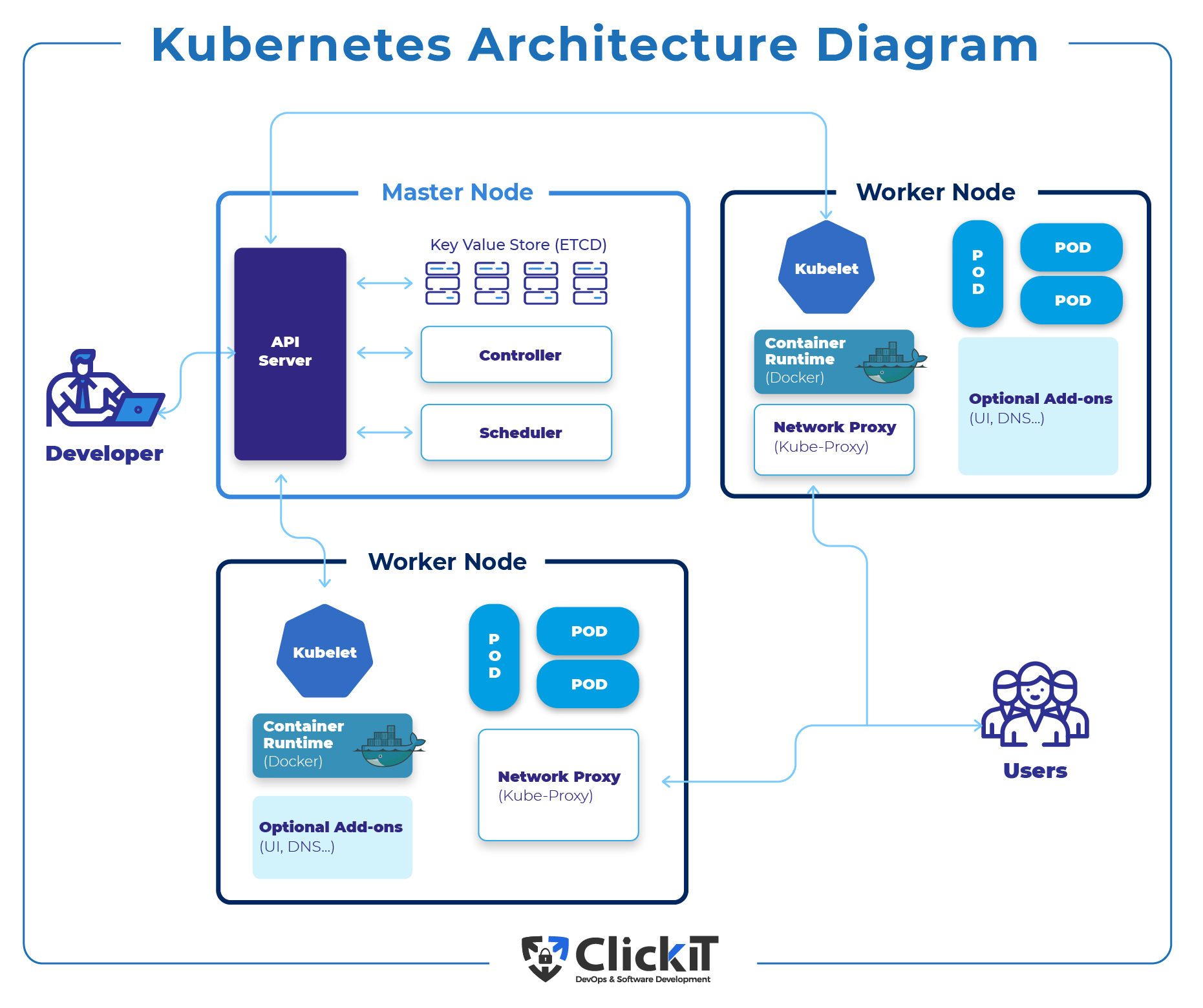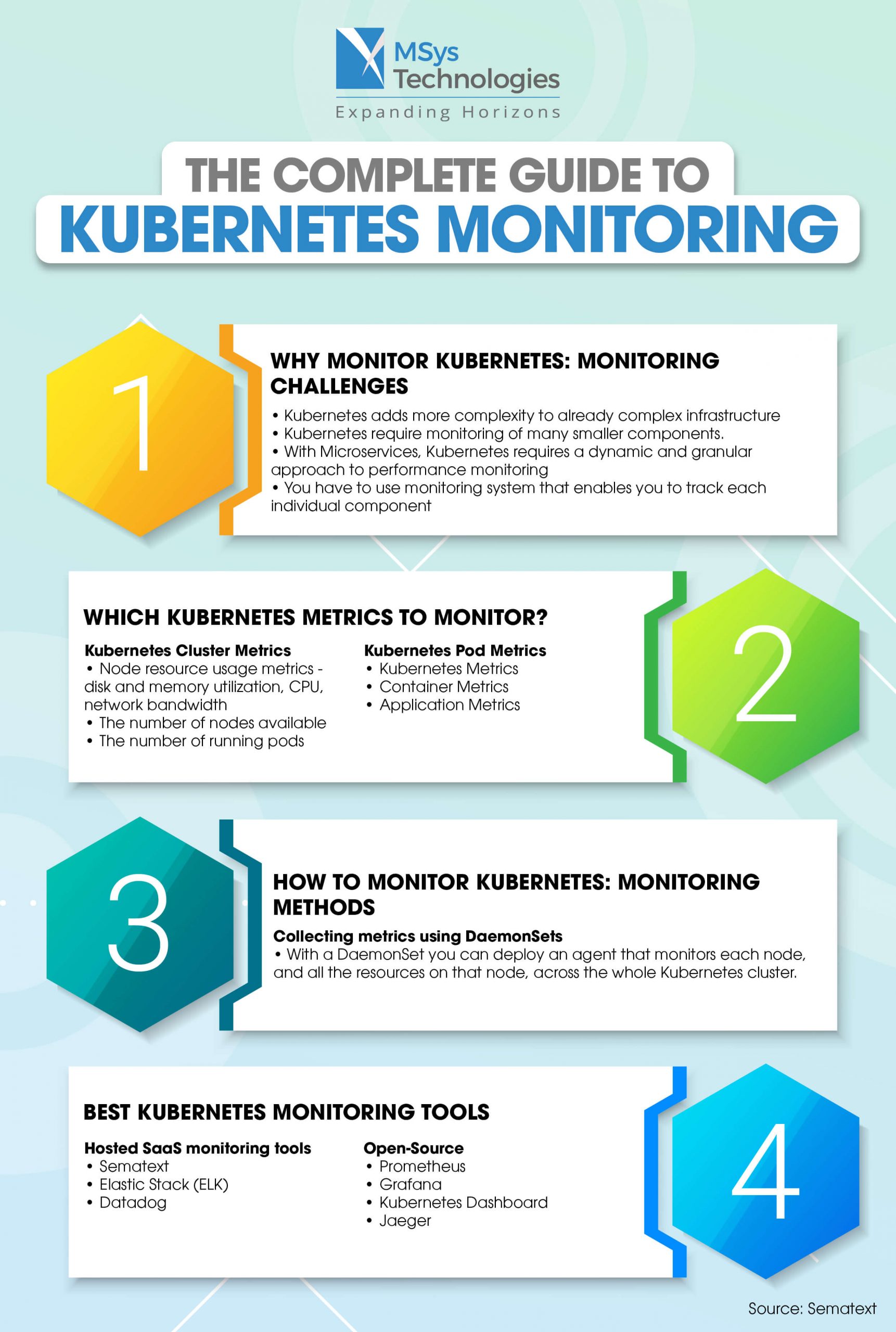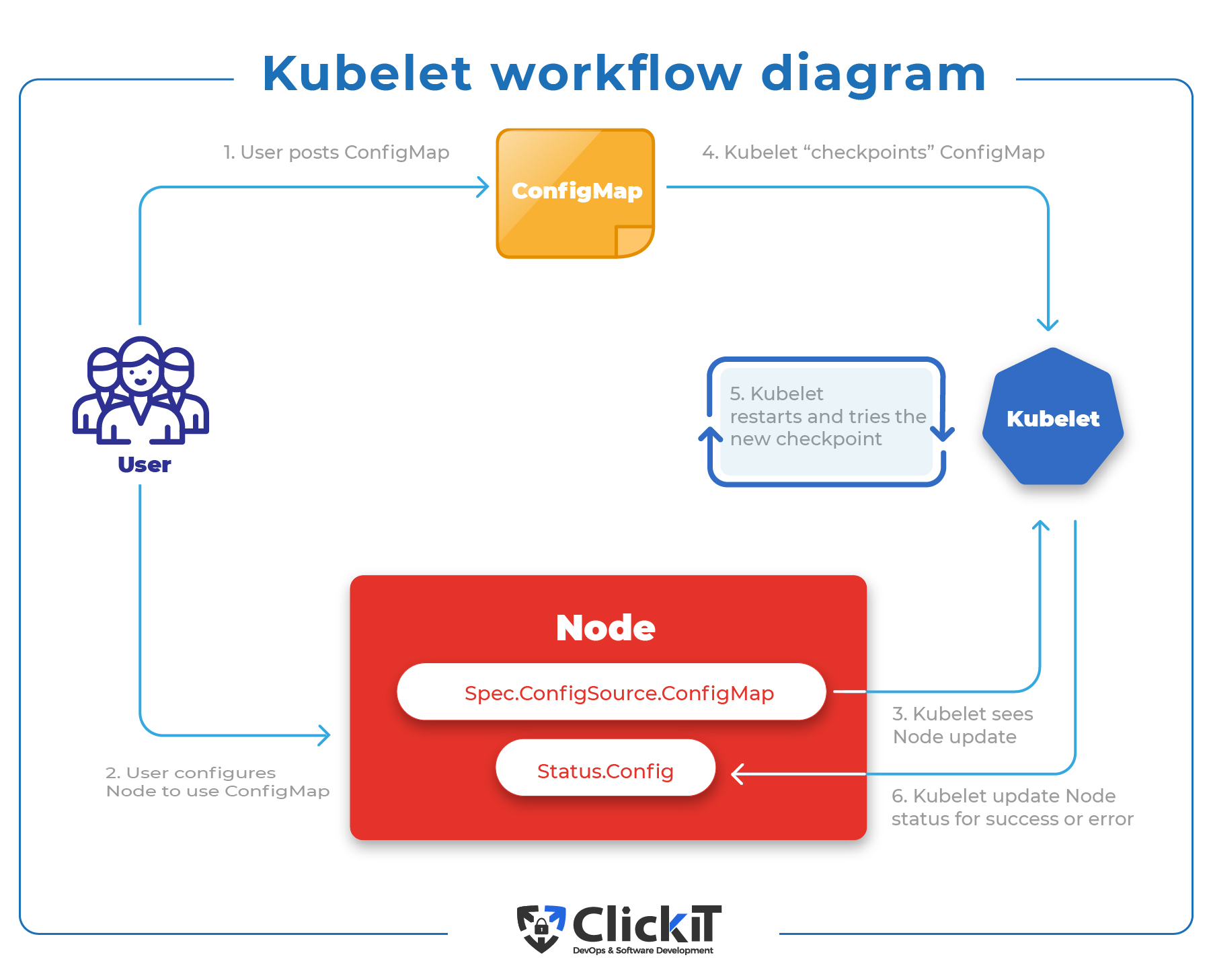What is Kubernetes Network?
Kubernetes network is a complex and dynamic network infrastructure designed to support container orchestration. It differs from traditional network architectures in several ways, including its ability to support ephemeral containers, its flat network topology, and its decoupling of network and storage resources. Kubernetes network provides several benefits, including increased scalability, improved resource utilization, and simplified network management. It enables the creation of virtual networks that can span multiple hosts and provide connectivity to containers running on those hosts.
Kubernetes network also supports advanced networking features such as service discovery, load balancing, and network security. These features are essential for building and deploying modern applications that require high availability, low latency, and robust security.
Key Components of Kubernetes Network
Kubernetes network consists of several key components that work together to provide a robust and scalable network infrastructure for container orchestration. These components include pods, services, and ingress controllers. Pods are the smallest deployable units in Kubernetes, and they represent a single instance of a running process in a container. Pods are ephemeral and can be created, deleted, and recreated as needed. Each pod is assigned a unique IP address, and all containers within a pod share the same network namespace.
Services are a logical abstraction over pods that provide a stable IP address and DNS name for a set of pods. Services enable load balancing, service discovery, and traffic management for pods. They can be exposed internally within a cluster or externally to the internet.
Ingress controllers are a reverse proxy that manages external access to services in a cluster. Ingress controllers provide features such as SSL termination, name-based virtual hosting, and URL path-based routing. They enable external services to be exposed securely and efficiently.
These components interact with each other in various ways to provide a flexible and dynamic network infrastructure. For example, a service can be used to load balance traffic across multiple pods, and an ingress controller can be used to expose that service externally.
How to Design a Robust Kubernetes Network
Designing a robust and scalable Kubernetes network requires careful planning and configuration. Here are some best practices and steps to follow:
Define a network topology: The first step in designing a Kubernetes network is to define a network topology that meets your needs. This includes deciding on the number and size of clusters, the network segmentation strategy, and the network plugins to use.
Configure network policies: Network policies are a powerful tool for controlling traffic flow in a Kubernetes network. They allow you to define rules for ingress and egress traffic, as well as traffic between pods. It is essential to configure network policies to ensure that traffic flows only where it is supposed to.
Choose a network plugin: Kubernetes supports several network plugins, including Calico, Weave Net, and Flannel. Each plugin has its features, benefits, and drawbacks. It is essential to choose a plugin that meets your needs in terms of scalability, security, and performance.
Configure CNI plugins: Container Network Interface (CNI) plugins provide network connectivity for containers. It is essential to configure CNI plugins to ensure that containers can communicate with each other and with external services.
Test and validate: Once the Kubernetes network is designed and configured, it is essential to test and validate it to ensure that it meets your needs. This includes testing traffic flow, network policies, and network plugins.
By following these best practices, you can design a robust and scalable Kubernetes network that meets your needs. It is essential to keep in mind that Kubernetes network design is an ongoing process, and it is necessary to revisit and adjust the design as your needs change.
Top Kubernetes Network Solutions in the Market
When it comes to Kubernetes network solutions, there are several top options available in the market. Here are some of the most popular ones:
Calico: Calico is a popular Kubernetes network solution that provides network security and policy management. It is known for its simplicity, scalability, and high performance. Calico supports both IPIP and VXLAN encapsulation and provides advanced features such as network segmentation, network policy enforcement, and service discovery.
Weave Net: Weave Net is another popular Kubernetes network solution that provides a fully meshed network overlay. It is known for its ease of use, flexibility, and high performance. Weave Net supports both IPv4 and IPv6 and provides advanced features such as service discovery, network policy enforcement, and encryption.
Flannel: Flannel is a simple and lightweight Kubernetes network solution that provides a virtual network for containers. It is known for its ease of use, simplicity, and high performance. Flannel supports both VXLAN and host-gw encapsulation and provides advanced features such as network policy enforcement and service discovery.
Cilium: Cilium is a Kubernetes network solution that provides network security and policy management using eBPF technology. It is known for its high performance, scalability, and advanced features such as network policy enforcement, service discovery, and load balancing.
Contiv: Contiv is a Kubernetes network solution that provides network policy management, service discovery, and load balancing. It is known for its flexibility, scalability, and high performance. Contiv supports both VXLAN and MACVLAN encapsulation and provides advanced features such as network segmentation and network policy enforcement.
When choosing a Kubernetes network solution, it is essential to consider factors such as scalability, security, performance, and ease of use. Each solution has its strengths and weaknesses, and it is essential to choose one that meets your specific needs and requirements.
How to Implement Kubernetes Network Security
Network security is a critical aspect of Kubernetes network management. With the increasing adoption of Kubernetes for container orchestration, it is essential to ensure that your Kubernetes network is secure. Here are some best practices and steps to implement Kubernetes network security:
Implement network policies: Network policies are a powerful tool for controlling traffic flow in a Kubernetes network. They allow you to define rules for ingress and egress traffic, as well as traffic between pods. It is essential to configure network policies to ensure that traffic flows only where it is supposed to.
Use Role-Based Access Control (RBAC): RBAC is a powerful access control mechanism that allows you to control who can access what resources in your Kubernetes cluster. It is essential to configure RBAC to ensure that only authorized users can access your Kubernetes network.
Implement network segmentation: Network segmentation is the practice of dividing a network into smaller, isolated segments. It is an effective way to limit the scope of a security breach and prevent lateral movement by attackers. It is essential to configure network segmentation to ensure that your Kubernetes network is secure.
Use encryption: Encryption is a powerful security mechanism that ensures that data is transmitted securely over the network. It is essential to use encryption to secure your Kubernetes network traffic.
Monitor and audit: Monitoring and auditing are critical aspects of Kubernetes network security. It is essential to monitor your Kubernetes network traffic and audit your Kubernetes network logs to detect and respond to security threats.
By following these best practices, you can implement Kubernetes network security and ensure that your Kubernetes network is secure. It is essential to keep in mind that Kubernetes network security is an ongoing process, and it is necessary to revisit and adjust the security measures as your needs change.
How to Monitor and Troubleshoot Kubernetes Network Issues
Monitoring and troubleshooting Kubernetes network issues are critical aspects of Kubernetes network management. With the increasing adoption of Kubernetes for container orchestration, it is essential to ensure that your Kubernetes network is running smoothly. Here are some best practices and steps to monitor and troubleshoot Kubernetes network issues:
Use monitoring tools: Monitoring tools such as Prometheus, Grafana, and Kubernetes dashboard can help you monitor your Kubernetes network traffic, detect anomalies, and troubleshoot issues. It is essential to configure these tools to ensure that you have visibility into your Kubernetes network.
Check network policies: Network policies are a powerful tool for controlling traffic flow in a Kubernetes network. It is essential to check network policies to ensure that traffic flows only where it is supposed to.
Check network plugins and CNI plugins: Network plugins and CNI plugins are responsible for providing network connectivity to your Kubernetes pods. It is essential to check these plugins to ensure that they are functioning correctly.
Use logging and tracing: Logging and tracing can help you troubleshoot Kubernetes network issues by providing detailed information about network traffic and errors. It is essential to configure logging and tracing to ensure that you have the necessary information to troubleshoot issues.
Check for common network issues: Common Kubernetes network issues include network latency, packet loss, and network congestion. It is essential to check for these issues and take corrective action as necessary.
By following these best practices, you can monitor and troubleshoot Kubernetes network issues and ensure that your Kubernetes network is running smoothly. It is essential to keep in mind that Kubernetes network troubleshooting is an ongoing process, and it is necessary to revisit and adjust the troubleshooting measures as your needs change.
How to Migrate from Traditional Network to Kubernetes Network
Migrating from a traditional network to a Kubernetes network can be a challenging but rewarding process. Here are some best practices and steps to migrate from a traditional network to a Kubernetes network:
Assess your current network: Before migrating to a Kubernetes network, it is essential to assess your current network and identify the components that need to be migrated. This includes servers, storage, network devices, and applications.
Choose a Kubernetes network solution: There are several Kubernetes network solutions available in the market, such as Calico, Weave Net, and Flannel. It is essential to choose a solution that meets your specific needs and requirements.
Design a Kubernetes network architecture: Once you have chosen a Kubernetes network solution, it is essential to design a Kubernetes network architecture that meets your needs. This includes configuring network policies, network plugins, and CNI plugins for optimal performance.
Deploy Kubernetes: Once you have designed a Kubernetes network architecture, it is essential to deploy Kubernetes. This includes configuring Kubernetes nodes, pods, and services.
Migrate applications: Once Kubernetes is deployed, it is essential to migrate applications to the Kubernetes network. This includes configuring application containers, networking, and storage.
Test and validate: Once the migration is complete, it is essential to test and validate the Kubernetes network to ensure that it is functioning correctly.
By following these best practices, you can migrate from a traditional network to a Kubernetes network and take advantage of the benefits that Kubernetes network provides. It is essential to keep in mind that Kubernetes network migration is an ongoing process, and it is necessary to revisit and adjust the migration measures as your needs change.
Future Trends in Kubernetes Network
Kubernetes network has revolutionized container orchestration and network architectures. As Kubernetes continues to evolve, so do the trends in Kubernetes network. Here are some future trends in Kubernetes network that you should keep an eye on:
Service Mesh: Service mesh is an architecture that enables communication between microservices in a distributed system. It provides features such as service discovery, load balancing, and security. Service mesh is becoming increasingly popular in Kubernetes network, and it is expected to become a standard feature in Kubernetes networks in the future.
Network Function Virtualization: Network function virtualization (NFV) is a technology that enables network functions to be virtualized and run as software applications. NFV is becoming increasingly popular in Kubernetes network, as it enables network functions to be deployed and managed as containers.
Multi-cloud Networking: Multi-cloud networking is the ability to manage and orchestrate network resources across multiple cloud providers. Multi-cloud networking is becoming increasingly popular in Kubernetes network, as it enables organizations to take advantage of the benefits of multiple cloud providers.
Artificial Intelligence and Machine Learning: Artificial intelligence (AI) and machine learning (ML) are becoming increasingly popular in Kubernetes network. AI and ML can be used to monitor and optimize network performance, detect and respond to network issues, and provide predictive analytics.
Edge Computing: Edge computing is the ability to process data and run applications at the edge of the network. Edge computing is becoming increasingly popular in Kubernetes network, as it enables organizations to reduce latency, improve performance, and save bandwidth.
By keeping up with these future trends in Kubernetes network, you can ensure that your Kubernetes network is robust, scalable, and secure. It is essential to keep in mind that Kubernetes network trends are constantly evolving, and it is necessary to revisit and adjust your Kubernetes network strategy as your needs change.






